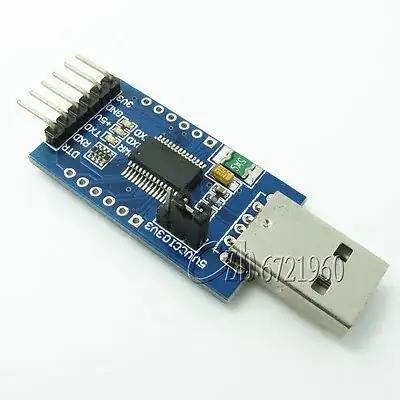I bought this thing off of eBay:

eBay Link
Will it allow me to program an ATmega[xxx] (Arduino clone) with a bootloader?
--> If so, how would I go about it? What should I do, and what should I certainly not do?
--> If not, what do I need (or where can I learn) to be able to use an Arduino clone with the Arduino IDE?
I'm a bit new to Arduino, and since I learned that a fair amount of the clones being sold on eBay don't have a bootloader, I wondered how to fix this. (and the "barebones" seem to be quite a bit cheaper)
Answer - summarized from different answers below (as I can only mark one answer below as accepted):
- Can you use an FT232R to burn a bootloader onto an AVR (such as an ATmega328)?
- => Yes you can, though it's a bit annoying to do, as it's slow and a bit more complicated than just plug and play. See the first part of Chris Stratton's answer below.
- I already have a working Arduino style board, can I use that?
- => Yes, you can use for example a UNO-style board to program another. This process is explained here: http://arduino.cc/en/Tutorial/ArduinoISP, which was referenced in the second part of Chris Strattons' answer below.
- The two options above are too much of a hassle for me, or I don't have an Arduino yet/available, is there another option?
- => Yes, you can buy a USB to ISP (In-System Programmer) board/programmer. They're pretty cheap and are called USBISP or USBASP for example. Here's an example: http://www.ebay.com/itm/180980285082, referenced at the end of MatsK's answer. (or an even cheaper one: http://www.ebay.com/itm/390806886235).